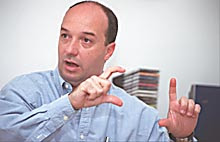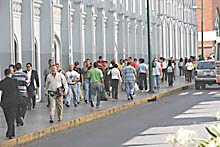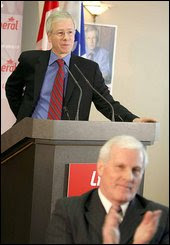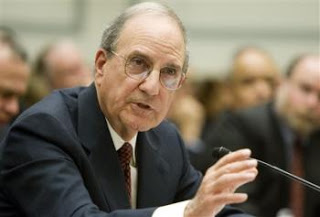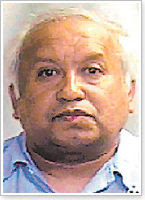Reforzarán seguridad del área metropolitana
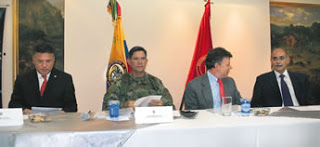
Si las intenciones de los Gobiernos Local, Departamental y Nacional se cumplen, al comenzar marzo del presente año el área metropolitana de Bucaramanga tendrá mayor capacidad operativa y de respuesta contra la delincuencia. Eso estará garantizado en un mayor pie de fuerza de la Policía, disponibilidad de equipos, independencia financiera y autonomía en el manejo de la información de inteligencia contra el delito organizado, además de un mando independiente del Comando de Policía Santander.
La estrategia se completará antes de comenzar el segundo semestre de este año.
De voz del propio ministro de Defensa, Juan Manuel Santos Calderón, se confirmó ayer, durante el consejo de seguridad celebrado en Bucaramanga, la creación para la ciudad y el área metropolitana, del Comando Metropolitano de Policía. De él harán parte los municipios de Bucaramanga, Girón, Piedecuesta y Floridablanca, además de Rionegro y Lebrija.
Bucaramanga y el área metropolitana, sumados a estos dos municipios, están bajo la jurisdicción del departamento de Policía de Santander. Con la creación del nuevo Comando Metropolitano, estos municipios tendrán una Policía autónoma, con un comandante diferente al del comando del Departamento.
El anunció se concretó al cierre del primer consejo de seguridad del año, al cual asistieron las máximas autoridades del departamento, junto al Ministro de Defensa y toda la cúpula militar.
Ventajas
Según el General Óscar Naranjo Trujillo, director general de la Policía Nacional, el primero de marzo el Comando Metropolitano de Policía estará listo para entrar en funcionamiento.
Las ventajas del Comando Metropolitano, explicó el Oficial, se reflejarán en el manejo de un presupuesto independiente, lo cual permitirá inversión en nuevos equipos.
“La operatividad y la información de inteligencia estarán más centradas en el área metropolitana”, aseguró el General Naranjo.
Otra de las ventajas del nuevo comando será el aumento del pie de fuerza. Así lo ratificó el ministro Santos Calderón, quien anunció que en dos meses, 300 nuevos hombres de la Policía llegarán al nuevo Comando Metropolitano, y para julio próximo, otros 350 agentes serán enviados a reforzar la seguridad de la ciudad y su área metropolitana.
Durante el consejo de seguridad se definió que la base central del Comando Metropolitano estará ubicada donde hoy funciona el Fuerte Sur de la Policía del departamento, en el municipio de Floridablanca, Santander.
Financiación
“Del presupuesto nacional de la Policía, cerca de $40 mil millones de pesos serán invertidos en seguridad. $15 millones se invertirán en equipos de comunicaciones, $12 mil millones para movilidad, $4 mil millones para gastos de funcionamiento y cerca de $9 mil millones para la construcción de estaciones y sub-estaciones”, aseguró Naranjo Trujillo.
Aunque las Administra-ciones municipales aún no saben cuánto ni de dónde saldrán los recursos económicos para financiar lo que será el nuevo Comando Metropolitano de Policía, los mandatarios se comprometieron con destinar los recursos necesarios para sacar adelante esta iniciativa, que también contará con el apoyo económico del Gobierno Nacional.
Homicidios se incrementaron en 21%
En 2007, en Bucaramanga y el área metropolitana se presentaron 325 homicidios, 58 muertes violentas más que en 2006. Una inusitada ‘ola’ de asesinatos, que según algunas ONG obedecieron a ajuste de cuentas entre bandas dedicadas al narcotráfico y al rearme de paramilitares desmovilizados, se vivió en las calles de la ciudad y el área. La inseguridad llegó a tal punto que en dos días durante noviembre de 2007, ocho personas fueron asesinadas con disparos en la cabeza. El recrudecimiento de la violencia tuvo su punto máximo en diciembre del año pasado cuando 32 personas fueron asesinadas. El desmantelamiento, por parte de la Unidad Investigativa de Homicidios de la Sijin, de una banda de sicarios a sueldo, todos desmovilizados del Bloque Central Bolívar de las Auc, puso en evidencia el rearme de estas agrupaciones criminales, a las cuales se les atribuyen varios asesinatos selectivos en la ciudad.
Paso a paso
Lo que viene
1.- Desde ayer mismo, en una reunión privada en la cual participaron el ministro Santos Calderón, la cúpula militar del país y regional, los Alcaldes del área metropolitana y el Gobernador de Santander, comenzó la planificación para conformar el Comando Metropolitano de Policía.
2.- Vanguardia Liberal conoció que, en primera instancia, se definirá el nombramiento del general que se encargará del nuevo Comando.
3.- Luego se conformará una comisión integrada por los Alcaldes del área y la Gobernación, para definir el aporte presupuestal y el direccionamiento del proyecto.
4.- Estos puntos tendrán que definirse en los próximos 30 días, ya que el ministro de Defensa se comprometió a que el 1 de marzo el Comando Metropolitano de Policía estará funcionando.
Voz del experto
Para el Senador Alirio Villamizar Afanador, la creación del Comando de Policía Metropolitano servirá para mejorar las condiciones de seguridad en la ciudad y el área metropolitana. “Esto implica que tenemos un comando adicional al comando departamental de Policía, con mayor pie de fuerza, más logística en vehículos y en equipos de comunicaciones. En estos momentos el recurso humano no es suficiente para combatir los delitos más comunes y para brindarle seguridad a la ciudadanía”. El senador, quien fue uno de lo primeros ponentes en plantear la necesidad de un Comando Metropolitano de Policía para la ciudad, agregó que el Gobierno Nacional ha sido conciente de que la política de seguridad democrática ha direccionado la mayoría de los recursos al sector rural, descuidando en cierta forma las áreas metropolitanas.
“El Comando Metropolitano de Policía demanda una mayor responsabilidad de los diferentes municipios con respecto a la inversión en seguridad. Esa será otra de las ventajas de esta iniciativa”, agregó Villamizar.
Etiquetas: Colombia, In Vanguardia Liberal

